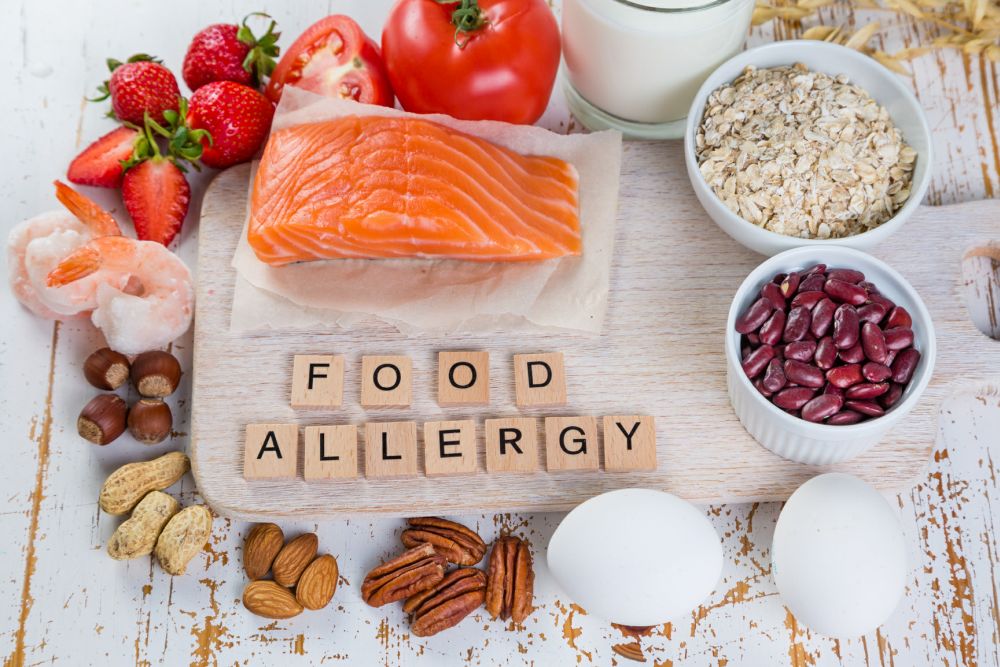Level 2 Food Allergen Awareness (RQF)

The essential Food Allergen Awareness Course for anyone working in hospitality and catering. Price is just £90 per person. The course is held at your company premises for up to 10 of you and your team members.
- The market leading regulated level 2 food allergen awareness qualification
- This qualification is supported by Allergy UK, who regard it as suitable staff training for catering outlets that wish to apply for their Allergy Aware Scheme.
On completion of this Level 2 Award in Food Allergen Awareness course you will have gained a strong understanding of food allergens and food intolerances. You will have an understanding of the effects these can have on individuals,learn how to provide accurate food allergen information, and how to control cross-contamination from allergenic ingredients.
Course aims
1. Understand the characteristics and consequences of food allergies and intolerances
- Recognise the importance of providing accurate allergen information and the potential implications of failing to provide correct information to consumers
- Identify the common symptoms of allergic reactions and food intolerances
- Identify common food allergens and foods commonly causing intolerances
2. Understand procedures for identifying and controlling contamination from allergenic ingredients
- Know common sources and vehicles of contamination, and appropriate hygiene controls that food handlers should follow to prevent allergenic contamination in catering businesses
- Identify food allergen cross contamination hazards and controls at specific process steps from purchase to service
- Understand procedures for the accurate communication of allergen information to consumers
- Identify methods of locating accurate allergen information
- Recognise how allergen information can be provided effectively
Learning Outcome 1
1.1 Why it is important to provide accurate allergen information and the implications of not doing so, including:
- Risk of allergy related illness/death.
- Risk of fines, imprisonment, legal costs, civil actions.
- Providing safe food, possible recall.
- Effect on reputation/profit.
1.2 Symptoms of allergic reactions and food intolerances, including:
- Typical symptoms of food allergy and intolerance, including mild and life threatening.
- Basic information regarding what to do if a customer suffers an allergic reaction, including emergency action for anaphylaxis.
1.3 Common food allergens and foods causing intolerances, including:
- Main food ingredients which cause allergic reactions and food intolerances and illnesses (e.g. Coeliac disease).
- Current allergens required to be identified.
Learning Outcome 2
2.1 Common sources and vehicles of allergenic contamination and appropriate hygiene controls:
- Common vehicles/sources to include hand and food contact surfaces, in particular in all food storage areas (including dry, refrigerated and frozen), food packaging, personnel (including hands), cloths, utensils.
- Controls include personal hygiene, cleaning, equipment.
2.2 Allergenic cross-contamination hazards and controls:
- Controls at specific process steps to include delivery, storage, preparation, cooking, display and service.
- Action to take if accidental contamination occurs.
Learning Outcome 3
3.1 Methods of locating accurate allergen information:
- Interpreting labels and recipes, food dishes which may contain hidden allergens, identifying presence of allergens by referring to delivery notes/recipes/product labels, specifications/ingredient lists and allergy file.
3.2 How allergen information can be provided effectively:
- Written and verbal communication both internally and to customers.
- Different ways information may be communicated to staff e.g. competent named people front of house and in kitchen or all staff trained.
- Need to make information available to consumers, importance of information being regularly updated and accurate.
- Communicating allergen information to customers:
-
- encouraging information sharing
- information all staff should know (depending on the system used in the business)
- what to do if you do not know answers to customer questions regarding allergens
- reporting and communicating problems and changes regarding allergens.
-
